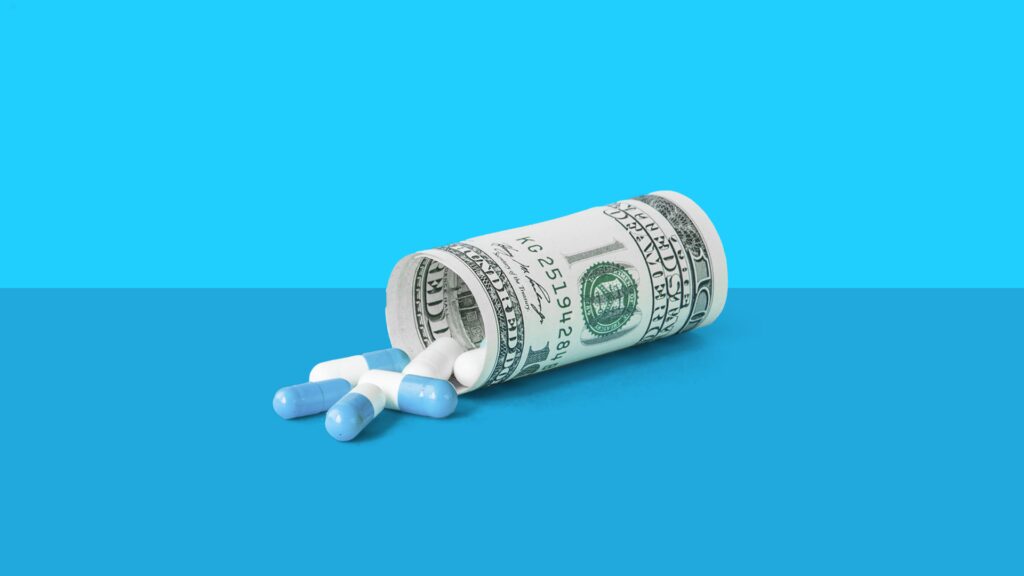
The cost of healthcare in the United States is a significant issue, and prescription drug prices are a significant contributor to the rising cost of healthcare. The relationship between prescription drug prices and healthcare costs is complex, but it is clear that high drug prices can have a significant impact on healthcare costs. In this essay, we will explore the relationship between prescription drug prices and healthcare costs and discuss some potential solutions for managing these costs.
Table of Contents
The Impact of High Prescription Drug Prices on Healthcare Costs

Source: policymed.com
Prescription drug prices have been rising rapidly in recent years, and this trend shows no signs of slowing down. High drug prices can have a significant impact on healthcare costs in several ways.
First, high drug prices can make it more difficult for patients to access the medications they need. Patients may be unable to afford the medications prescribed by their healthcare providers, which can lead to poor health outcomes and more expensive medical interventions down the line.
Second, high drug prices can lead to increased healthcare spending. Insurers may be required to cover the cost of expensive medications, which can increase premiums and out-of-pocket costs for patients. Additionally, high drug prices can lead to more expensive medical interventions, as patients may require more extensive treatment if their conditions are not effectively managed with medication.
Finally, high drug prices can have a significant impact on government healthcare programs, such as Medicare and Medicaid. These programs are required to cover the cost of prescription medications for eligible patients, and high drug prices can put a significant strain on these programs.
Solutions for Managing Prescription Drug Prices and Healthcare Costs
Managing prescription drug prices is a complex issue, but there are several potential solutions that can help manage healthcare costs.
One potential solution is to promote competition in the pharmaceutical industry. By increasing competition, pharmaceutical companies may be incentivized to develop and market medications at a lower cost. Additionally, increasing the use of generic medications can help reduce healthcare costs, as generic medications are typically less expensive than brand-name medications.
Another potential solution is to promote value-based pricing. Value-based pricing is a pricing strategy that takes into account the clinical benefits and economic value of a medication. By promoting value-based pricing, pharmaceutical companies can be incentivized to develop and market medications that provide significant clinical benefits at a reasonable cost.
The government can also play a role in managing prescription drug prices and healthcare costs. By negotiating drug prices directly with pharmaceutical companies, the government can help ensure that drug prices are reasonable and that patients can access the medications they need. Additionally, the government can promote transparency in the pharmaceutical industry by requiring pharmaceutical companies to disclose the costs associated with drug development and marketing.
Patient education and engagement can also play a significant role in managing prescription drug prices and healthcare costs. By educating patients about the importance of medication adherence and providing them with resources to help them manage their conditions, patients can be empowered to take an active role in their healthcare and prevent the need for costly medical interventions.
Prescription drug prices are a significant contributor to the rising cost of healthcare in the United States. High drug prices can make it more difficult for patients to access the medications they need, lead to increased healthcare spending, and put a strain on government healthcare programs. However, there are several potential solutions for managing prescription drug prices and healthcare costs, including promoting competition in the pharmaceutical industry, promoting value-based pricing, and increasing transparency in the pharmaceutical industry. By working together, stakeholders can help ensure that patients can access the medications they need at a reasonable cost, while also managing healthcare costs and promoting better health outcomes.
What determines the cost of prescription drugs?

Source: singlecare.com
The cost of prescription drugs is determined by several factors, including the cost of research and development, manufacturing, marketing, and distribution. Additionally, factors such as supply and demand, competition, and government regulations can also influence the cost of prescription drugs.
Research and Development Costs
The cost of research and development (R&D) is one of the primary factors that influence the cost of prescription drugs. Pharmaceutical companies spend billions of dollars each year on R&D to develop new medications, and these costs are often passed on to consumers in the form of high drug prices.
Manufacturing Costs
Manufacturing costs are another significant factor that influences the cost of prescription drugs. The cost of manufacturing medications can be influenced by factors such as the complexity of the drug, the size of the production run, and the location of the manufacturing facility.
Marketing and Distribution Costs
Pharmaceutical companies spend significant amounts of money on marketing and distribution to promote their medications and ensure that they reach their target audience. These costs can include advertising, sales force salaries, and distribution costs, and they can also contribute to the high cost of prescription drugs.
Supply and Demand

Source: relexsolutions.com
Like any other product, the cost of prescription drugs can be influenced by supply and demand. If there is high demand for a particular medication and a limited supply, the cost of that medication may increase. Conversely, if there is a low demand for a medication, the cost may decrease.
Competition
Competition can also play a significant role in the cost of prescription drugs. If there are multiple medications available to treat a particular condition, competition can help keep drug prices lower. However, if there is only one medication available to treat a condition, the pharmaceutical company that produces that medication may be able to charge a higher price.
Government Regulations
Government regulations can also influence the cost of prescription drugs. For example, the government can regulate the prices that pharmaceutical companies are allowed to charge for medications. Additionally, the government can incentivize the development and production of certain medications by providing grants or tax breaks to pharmaceutical companies.
The cost of prescription drugs is determined by several factors, including the cost of research and development, manufacturing, marketing, and distribution. Supply and demand, competition, and government regulations can also influence the cost of prescription drugs. While the high cost of prescription drugs is a significant issue, there are several potential solutions for managing these costs, including promoting competition in the pharmaceutical industry, promoting value-based pricing, and increasing transparency in the pharmaceutical industry. By working together, stakeholders can help ensure that patients can access the medications they need at a reasonable cost.







